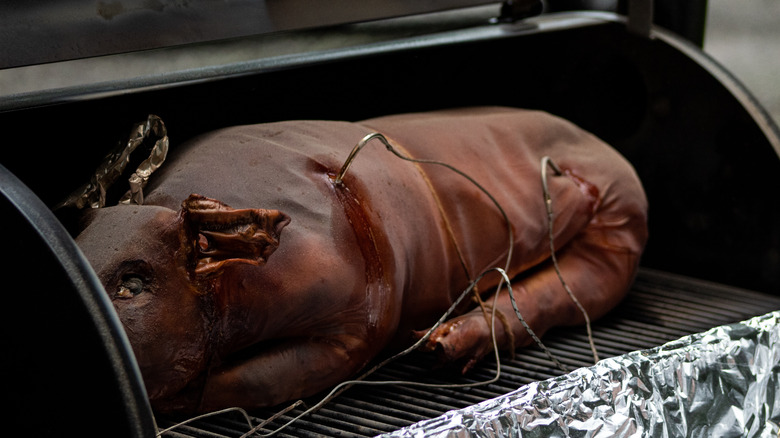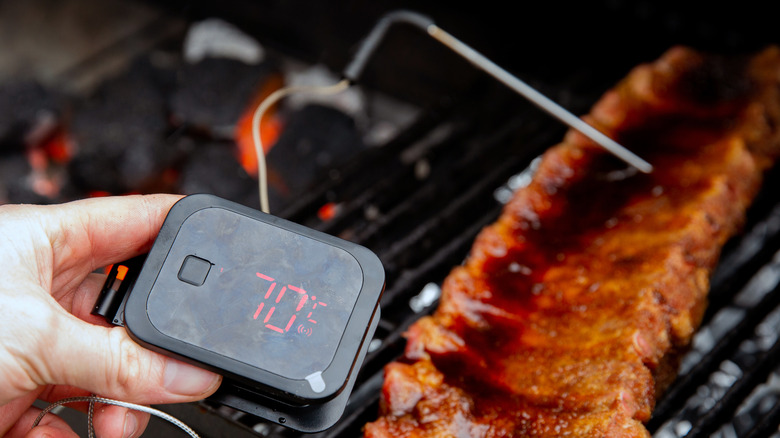The Temperature Tip To Remember When Smoking A Whole Pig
A whole-cooked pig is nothing short of impressive. With everything from the snout to the tail left intact, the piece of protein has an undeniable wow factor. Aside from its visual appeal, it's even more remarkable when the meat is juicy and flavorful as the sheer size of the protein can make cooking a challenge. However, when it comes to crafting a succulent whole hog prepared in the smoker, there's one super obvious (but often forgotten) temperature tip that can guarantee success every time.
A technique that's been around for ages to better preserve food, Olive Magazine explains that smoking has since transformed into a method used to boost flavors and enhance aromas. Although there are different methods of smoking from hot to cold, and even by using various pieces of equipment, a proper smoker often yields the best results. As for how exactly it works, The Home Depot explains that heat slowly circulates through a smoking chamber that mixes with water to create steam, cooking the meat.
Interestingly, while the flavor is one of the main reasons for choosing to smoke meats, the other benefit of smoking is that it helps tenderize proteins given its low and slow cooking method, notes Grill Masters Club. That said, how do you know when meat is done — should you follow cooking guidelines, or should you check on the state of your meat to find the answer?
It's better to use a thermometer than rely solely on a timer
Smoking a whole hog is not as simple as just placing a seasoned pig on the grill grates, closing the lid, and forgetting about it for several hours. Though the Barbecue Bible shares that for every 10 pounds of meat, you should add one to one and a half hours of cook time, there are so many factors at play when cooking a whole pig that can affect total smoking time like the size of the pig or the type of smoker that you use.
Moreover, since a pig has so many muscles of varying thickness in addition to tough tendons and globules of fat, certain cuts are best enjoyed at certain temperatures, which is why Amazing Ribs recommends that the rear rump, lean loins, and tenderloins should be smoked to about 145 degrees Fahrenheit, whereas fattier shoulders should reach 203 degrees Fahrenheit, ribs should be smoked to 190 degrees Fahrenheit, and the belly should reach about 200 degrees Fahrenheit. Naturally, crossing your fingers and hoping for the best as per cooking guidelines isn't the best way to ensure properly cooked meat.
Instead, MasterClass underlines the importance of investing in a good quality meat thermometer and using it to check the temperature of various sections of meat, rather than simply relying on the estimated smoking time. Track temperature throughout the cooking process and you'll produce the best whole-smoked pig yet!

